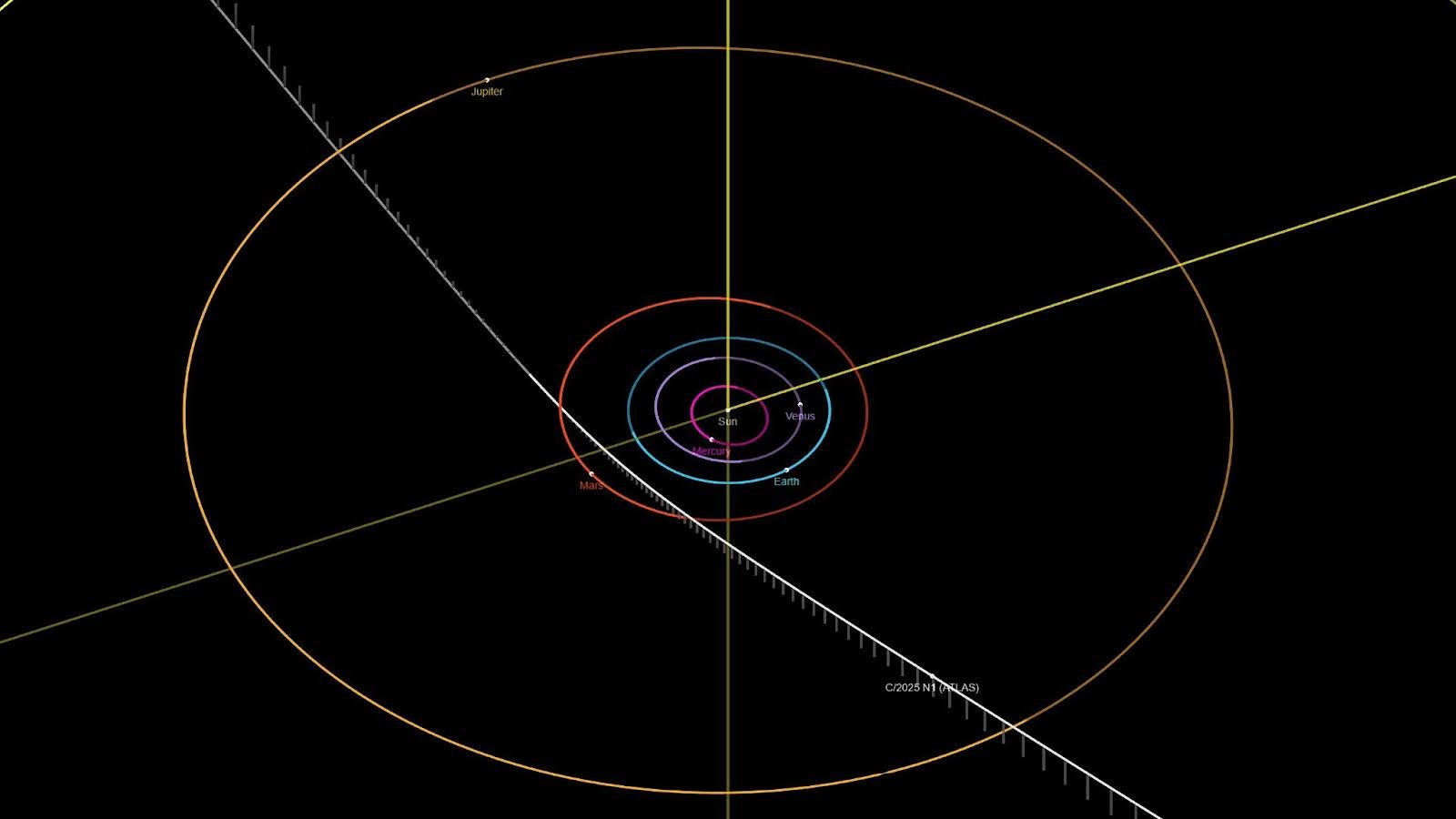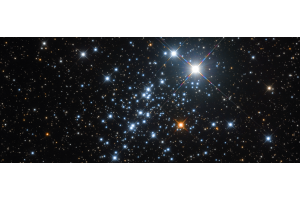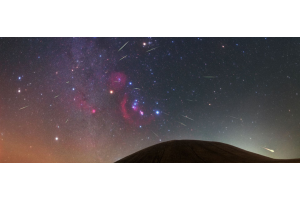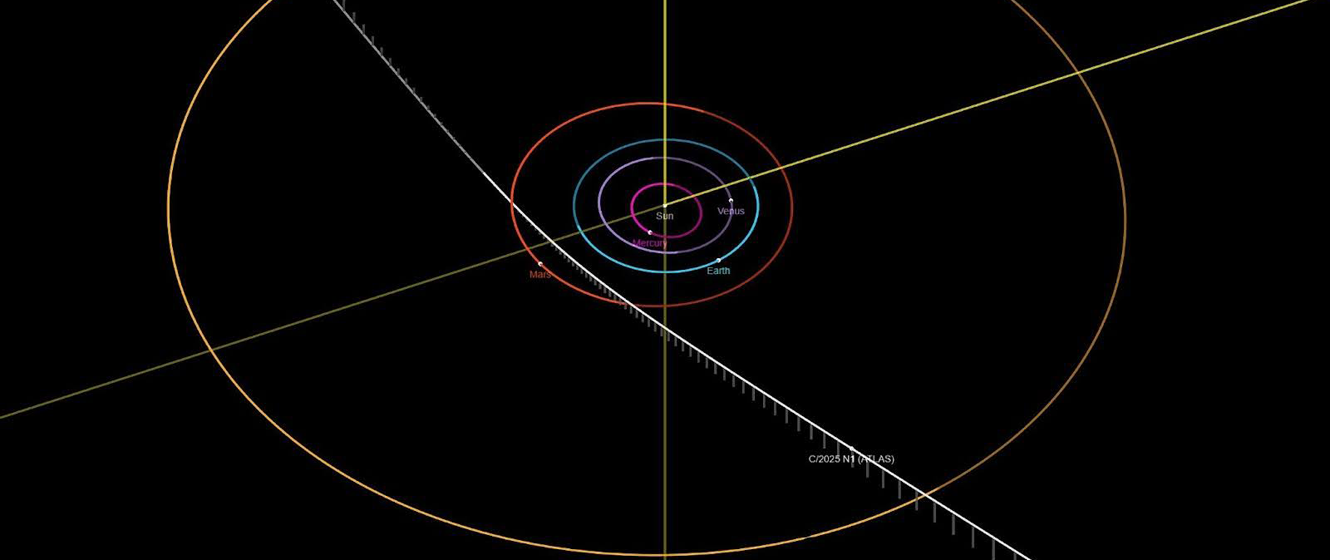
On July 1, 2025, astronomers at the ATLAS station in Chile made a groundbreaking discovery: the third interstellar object ever detected in our solar system, and only the second confirmed interstellar comet. Unlike objects native to our solar system, this comet hails from another star system and is an extrasolar visitor. This will give astronomers a rare opportunity to study the characteristics of a comet from another solar system and compare it to other comets in our own solar system. Its orbit is defined by an extraordinary eccentricity of 6.11, resulting in an incredible velocity of 68.3 km/s—the highest recorded for any interstellar object. Because of this incredible speed, this makes the comet “unbound” by the Sun’s gravitational influence, meaning that this comet’s appearance into the solar system is a one-and-done, and will wander throughout the Milky Way likely for many millions of years to come.
This interstellar object, dubbed 3I/ATLAS, is traveling at a remarkable speed of about 130,000 miles per hour relative to the Sun and will reach its closest approach to the Sun, or perihelion, on October 29, 2025, at approximately 1.35 astronomical units (AU), just inside Mars’ orbit. Its closest approach to Earth will occur in December 2025, at a safe distance of at least 1.6 AU (about 150 million miles), posing no threat to us earthlings. The comet’s hyperbolic orbit, with an eccentricity of 6.11, is the highest recorded among interstellar objects, surpassing 1I/‘Oumuamua (e=1.2) and 2I/Borisov (e=3.4), ensuring it will exit the solar system after its brief visit. This interstellar visitor offers a rare opportunity to study material from another star system, potentially carrying clues about the formation of distant planetary systems. Unlike solar system comets, which originate from the Kuiper Belt or Oort Cloud, 3I/ATLAS formed around another star and was ejected into interstellar space millions or billions of years ago. Its high speed and open trajectory mean it will not return, making current observations critical. The comet will remain visible to ground-based telescopes through September 2025, before becoming too close to the Sun to observe, and is expected to reappear for study in early December 2025.
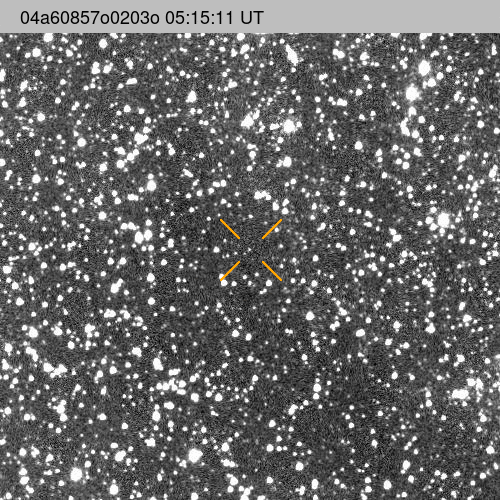
Can I see this interstellar comet?
In short, not easily, due to several factors. At its brightest, this interstellar vagabond will be poorly positioned during its closest approach, as mentioned, it will be on the other side of the Sun when it reaches perihelion. It won’t be for relatively short periods before and after perihelion where observations may be possible, assuming the comet even survives the closest approach (some comets can actually break up prior to this milestone). Observing this interstellar comet presents significant challenges due to its faint apparent magnitude of +11.5 at its brightest, making it invisible to the naked eye and even to smaller telescopes.
We recommend using telescopes with apertures larger than 10 inches. Additionally, your observations must be conducted under very dark skies, far from urban light pollution, to maximize visibility. However, this does not make it impossible for even amateurs to see this comet. Although the comet may be difficult to see, it may be less difficult to photograph. The new Sky-Watcher HAC125DX f/2 mini astrograph would be a great telescope for this purpose, as it is a very “fast” telescope that can capture comets before they significantly begin to move across the field-of-view.

Learn More
Interested in diving deeper into the world of astronomy? Check out our AstronomyHub for a wealth of articles, guides, local resources for planetariums and observatories near you, and more to enhance your stargazing experience.





